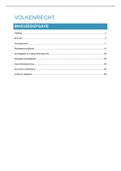Samenvatting
Summary LPC Skills Notes - 90%-100% Distinction and Competent in all BPP 2022)
- Vak
- Instelling
Colour-coded extremely thorough BPP 2022 Skills notes All solutions, examples, past papers and chapter notes worked in Tips on how to answer in red Clear instructions No need to read the chapter with these notes
[Meer zien]




